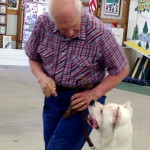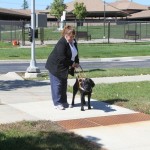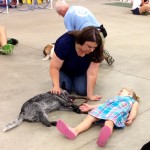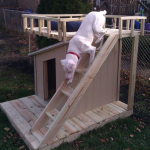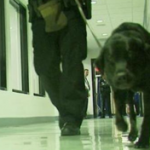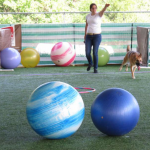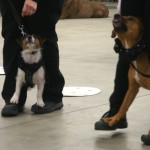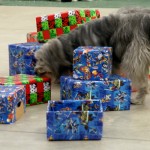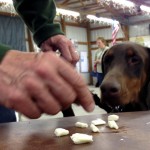From the first class session, we help you get your dog’s attention. Getting your dog to pay attention to you often starts with your paying close attention to your dog. Attend to your dog intensely early in training, and your dog will begin to pay attention to you, too. The picture is an example of that two-way attention. Your goal will be to build your dog’s habit of paying attention to you even in the midst of lots of distractions – noises, other dogs, rabbits and squirrels, other people, etc. The first step is your paying close attention to the dog.



